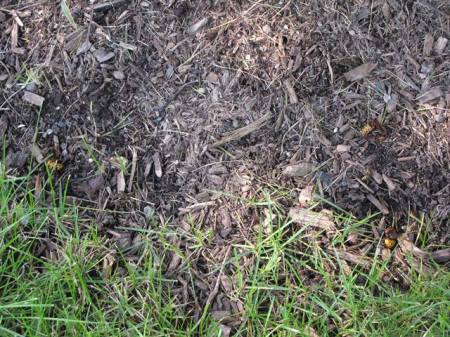Renee wanted me to help her get rid of the hornets. So I had to decide how to go about it. The most effective way to control European hornets would be to destroy their nest and colony. But we have no idea where the nest is – probably not even on her property. If we went to spray the hornets we see on the trees with an ordinary contact insecticide we’d just kill those individuals present at the time.
So I opted to coat the bark of the trees with a material called dinotefuran. It’s a neonicotinoid, like Merit, with which you may be familiar. But it’s much more soluble, so when applied to the bark of a tree it can be absorbed, and then conducted through the tree’s phloem. And the phloem of the birch branches is where these hornets are feeding.
I made a visit to Renee’s today to check the results. There were no longer any hornets on the tree. But there were MANY on the ground, all either dead or dying.


So I think we made a good choice. Though we did have to intervene with a pesticide, the one we used – dinotefuran – is unlikely to cause harm other than to the target pest. It is extremely low in toxicity to humans. And with the trunk application method, the material all goes where we want it – in the tree. The only exposure is to whatever eats the tree. And, being so highly soluble, it dies not last very long (like Merit does). So it won’t be affecting beneficial insects like bees next year, after its job is done.
Post Script: I found a really good article since I had this experience. It’s by Frank Santamair, in the Journal of Arboriculture from 1984.

